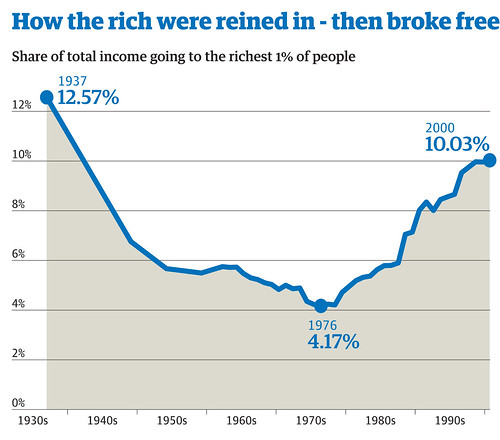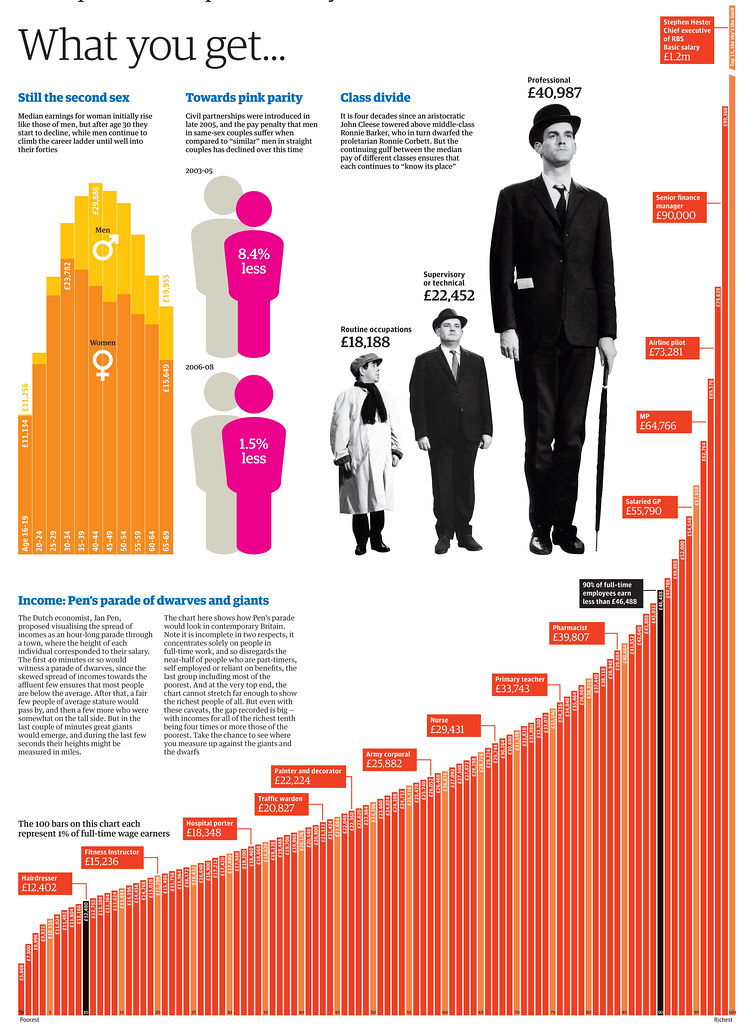I saw Jane Wills of Queen Mary University of London speak last night on the battle for a living wage in the UK, a great talk and fascinating in its comparisons to the US…though the comparisons are all my own!
I think graphs always speak so much louder than words, so just a quick snapshot in the most comparable format I could find of growing inequalities in the two countries.
On inequality in the UK from The Guardian:
On inequality in the US from Thomas Piketty and Emmanuel Saez (via The New York Times)

The US retains its role as a world leader… as of 2005, the top 1% in the US held 21.8% of the wealth, and it is perhaps more frightening to look at the other lines. But many of us aren’t so happy about this, as it means we’re generally fighting each other for the little that is left. So what is being done?
In the UK, as in the US, there has been a growing movement for a living wage. It is only a very small step towards the truly just world that I believe possible on alternate Wednesdays, but I will never say that such small steps do not require a most inhuman amount of work by an admirable and massive number of people.
Essentially the minimum wage (only introduced in the UK in 1999, upon which 2.1 million people received a raise averaging 10%!) is the maximum salary that the market says it can afford to pay people. The living wage is the minimum salary that people actually need to live. A bit simplified I know, but they reduce nicely to moral foundations.
The UK living wage campaign (inspired by the US living wage campaign, begun in Baltimore in 1994) is spearheaded by a non-profit called London Citizens, a group closely based on the organizing model of the Industrial Areas Foundation, working to create a broad and powerful coalition of those already involved in churches, mosques, schools, unions and community groups.
The victories have primarily been won in London. One of the main problems has been identified as the widespread, almost ubiquitous, practice of employers outsourcing every job possible (see the brilliant new book co-authored by Jane, Global Cities at Work). This forces contractors to compete amongst themselves and underbid each other in a mad rush to the bottom. So a huge push of the campaign has been to negotiate with large employers (hospitals, office buildings, the Olympic contractors) to only outsource to businesses providing a living wage.
This reminded me a great deal of SEIU 1877’s strategy in the Justice for Janitors campaign. So I asked, and indeed! They were here at the beginning, working with one of the unions involved in the struggle. Governmental authority works a bit differently here in London and so there hasn’t been a push for anything like a city-wide ordinance, but there are talks of a campaign to get any organization receiving Government funding to ensure the living wage.
It’s a small world, and hopeful to know that some of the lessons of struggle are crossing the Atlantic (and Pacific). May that continue and grow.
So to end not a cliche, but on John Cleese (because I’m smitten with him), here is a final graphic from The Guardian. Of course, it’s a load of doom in pretty colors really. The only bright light is the success of civil partnerships. I haven’t anything as pretty from the US, I just know (in my gut) everything is worse…



One Comment